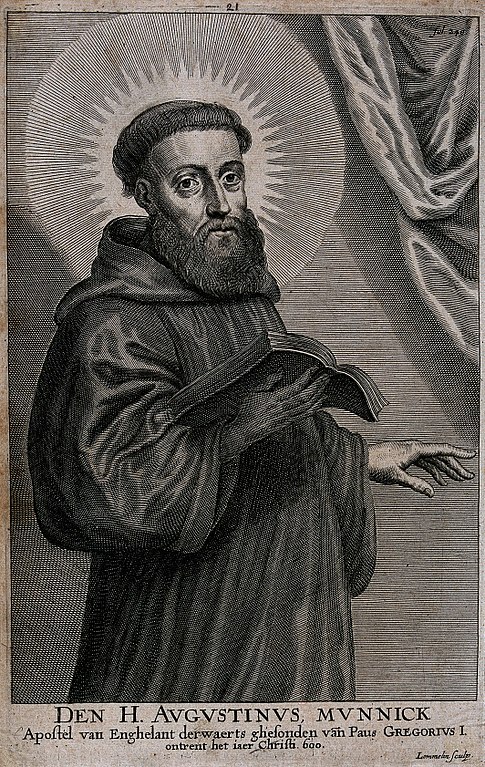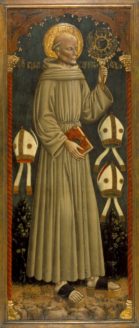
A new Mass setting has ranked #1 in Billboard’s Traditional Classical Albums chart this month.
After its release on March 15th, Frank La Rocca’s “Requiem for the Forgotten” immediately earned #2 in the chart during its first week of sales (the week of March 30). It re-entered the charts as #1 on the week of April 13, ranking above Bach renditions and even the “Beethoven for Three: Symphony” album featuring Emanuel Ax, Leonidas Kavakos, and Yo-Yo Ma!
What is it about this Mass setting that has earned it such acclaim, and what does this say about the role of sacred music in the modern world? We’ll unpack these questions to explore how sacred music changes lives and moves us toward encountering God.
A Mass Celebrating Forgotten Lives
I was blessed enough to attend the world premiere of “Requiem for the Forgotten” on March 15 at Church of the Epiphany in Miami, Florida. The Mass was celebrated by San Francisco’s Archbishop Salvatore Cordileone, who commissioned the piece for the Benedict XVI Institute for Sacred Music and Divine Worship.
The “Requiem for the Forgotten” Mass prays for those who never received a funeral, including the homeless, victims of war, immigrants, and exiles. The offertory piece, “Commemoration: A Hymn for Ukraine,” was written by Benedict XVI Institute poet-in-residence James Matthew Wilson and intercedes especially for those who died at the hands of the Communist regime. This prayer hits close to home for me, as my family fled the suppression in Communist Cuba.
In an interview with the Benedict XVI Institute, Wilson explained that the offertory’s goal was two-fold: “First: to put, in as simple and as musical language as possible, a brief allusion to the individual martyrs of Communism and gesture towards something of their lives. Second: to write stanzas that also spoke of the suffering of the Ukrainian people under the Soviet and Russian attack. I wanted to speak of the theological virtue of hope and illuminated wisdom that was at the heart of the Ukrainian Catholic experience.”
The composer, La Rocca, is descended from Ukrainian immigrants who fled the Soviet-occupied country.
“Communism is the scourge of the modern age,” La Rocca said. “It’s the offspring of the Enlightenment: the Reign of Terror, hidden from public view. A project that honors the courage and sacrifice of people in opposing this scourge is always going to be something that I want to lend my own support to—in this case, through artistic creation.”
Witnesses to the Impact of Sacred Music on the Soul
While covering the world premiere for the Archdiocese of Miami’s Florida Catholic newspaper, I encountered a young man named Logan Ramos, who shared how sacred music had changed his life.
“When I first came back to the Church, sacred music drew me in,” Ramos said. “The music at [Church of the] Epiphany helped me focus on prayer. Music is not the center of the Mass, because that’s the Eucharist, but music helps people engage with the liturgy.”
I can relate. Sacred music has also had a huge impact on my life.
When I was in middle school, my sister Grace and I were both homeschooled, and our mom took us to daily Mass. One of our parish priests, Fr. Andrew Pietraszko, approached us one day, inviting Grace and me to altar serve whenever he celebrated the daily Mass. This tough Polish priest with a heart of gold was a survivor of Soviet Communism and wanted to make sure that the youth were invested in Mass.
Later on, when Fr. Pietraszko learned that Grace and I both sang in a children’s choir, he encouraged us to chant the psalm and sing sacred music Communion meditations during daily Mass. He would even forgo the homily to allow time for the psalm to be chanted rather than read.
“We need to get young people actively involved in church,” he used to say. “That’s how they remain in the Church.”
Singing at sacred music Mass throughout middle school and high school was a huge blessing for us.
We grew as musicians—after all, singing sacred music a-capella at 8:00 a.m. is no easy task! We became increasingly connected to the church community. Parishioners continuously encouraged us to keep singing, sharing the healing impact that the sacred music had on their souls through the Holy Spirit.
I also grew in my faith. The Mass wasn’t some boring obligation for me. It was a meaningful way to encounter God, with challenging, beautiful sacred music that moves me.
In 2020, Fr. Pietraszko succumbed to Covid-19 as one of the few hospital chaplains to volunteer to enter infected patient rooms during the height of the pandemic.
At his funeral Mass, Grace and I sang an ancient Polish chant to the Virgin Mary, “Bogurodzica,” as a last Communion meditation hymn for that holy priest.
Soon after the funeral, we received an invitation from the music director of the church to begin training as official cantors. From heaven, Fr. Pietraszko was still looking out for us, making sure we stayed involved in the liturgy of the Mass.
Why We Must Never Forget Sacred Music
It’s not a coincidence that I’m remembering the witness of Fr. Pietraszko, an “unsung hero,” in the light of “Requiem for the Forgotten.”
Sacred music, too, is an art form that we cannot afford to forget—especially in this time of Eucharistic revival.
“‘Requiem for the Forgotten’s’ emergence into the Billboard charts at #1, as did the previous recording of Frank La Rocca’s ‘Mass of the Americas,’ is a sign that Catholics—and not only Catholics—hunger for the presence of God,” said Archbishop Cordileone in an email interview with Catholic Exchange. “Sacred music helps us experience the reality that He is with us, most especially in the Eucharist.”
Catholic writers, poets, musicians, and composers need to tap into the richness of the art form of sacred music. This not only can help us grow as artists, but can also can strike a chord with contemporary audiences. As Cardinal Ratzinger once said, “The encounter with the beautiful can become the wound of the arrow that strikes the heart and in this way opens our eyes…”
Wilson echoes this belief: “These projects will remind people that holiness is possible in the world. Parallel to that, the Church’s tradition of beauty is possible, that both holiness and beauty are available to us.”
Remembering the forgotten in our Catholic liturgy and art, as La Rocca and Wilson did, is also an essential way of inspiring us to live as courageous witnesses to Christ’s love.
“I just think it sometimes seems that the world in which contemporary Catholics live has become much smaller and more complacent,” noted Wilson. “The example of the martyrs is so compelling and convincing, that even in suffering, and especially in suffering, they had complete dedication to God. Holiness is possible. Every bit of the holiness of the apostles is as alive to us as it ever was.”
Photo by Steven Van Elk on Unsplash
J. Wilson, email communication, April 11, 2024.
Fr. La Rocca, interview, April 12, 2024.
S. Cordileone, email communication, April 11, 2024.




